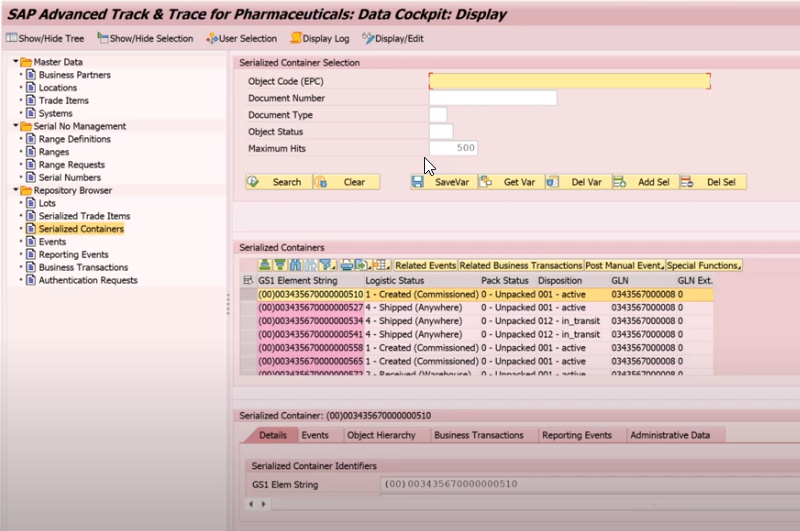SAP Advanced Track and Trace for Pharmaceuticals Data Cockpit "/n/sttp/cockpit"
Serial Number Length: Defines the length of the serial number; SAP Advanced Track and Trace for Pharmaceuticals supports serial number lengths between 1 and 40 digits.
- Master Data
- Serial Number Management
- Range Definitions
- Ranges
- Range Request
- Serial Numbers
- Repository Browser
- Lots/"Batch" - Lot is also known as a Batch or LGTIN and is a non-serialized quantitative object with a quantity that is typically more than 1.
- Serialized Trade Items - Serialized Trade Items are identified by GTIN and the serial number
- Serialized Containers /"Pallets" A serialized shipping container code (SSCC) is a uniquely identifiable transport unit like a pallet or a carton
- Events
- Reporting Events
- Business Transactions
- Authentication Requests
- Business Partners are any trading partners with whom traceability data is being exchanged, for example, a CMO (contract manufacturing organization), CPO (contract packaging organization), wholesaler, Third-party Logistics (3PL) company.
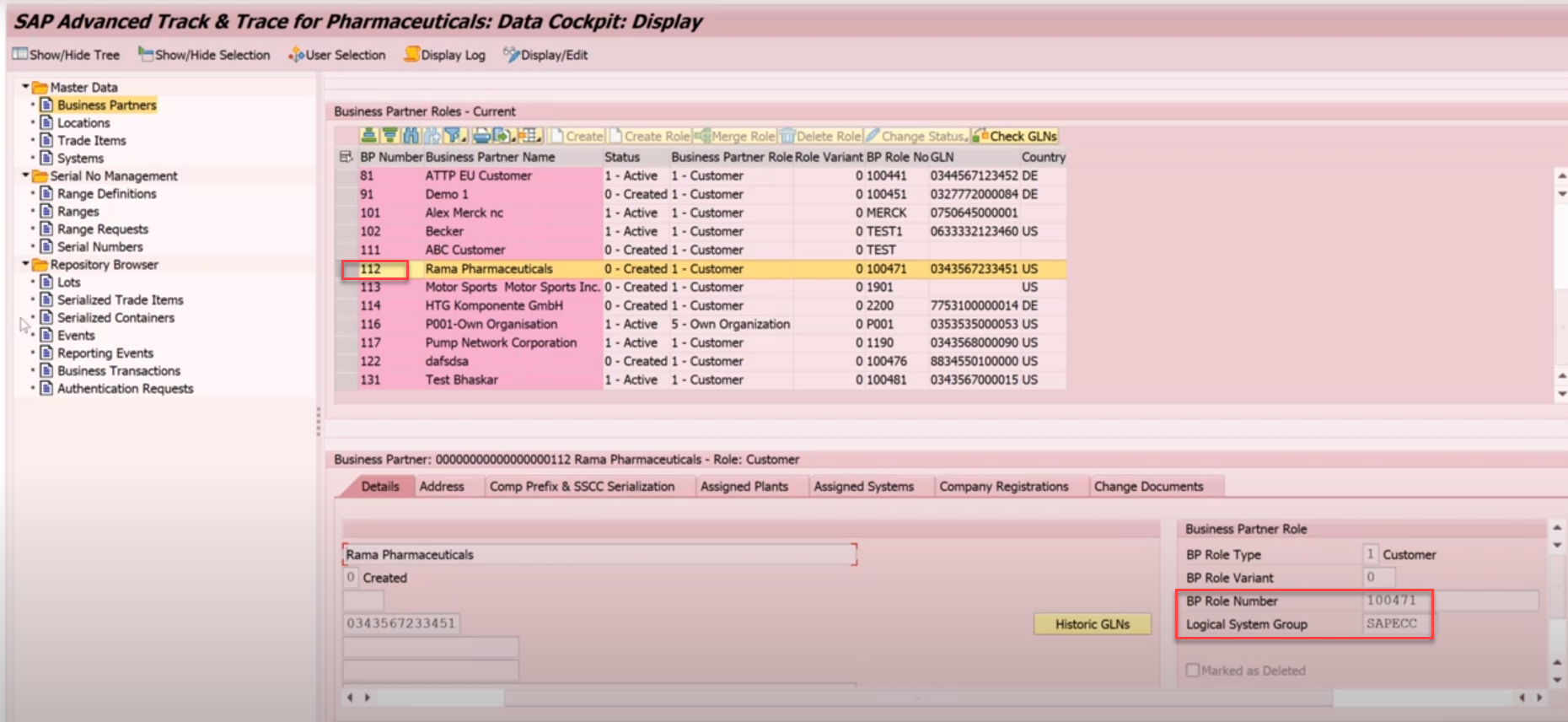
A location typically represents a plant or a storage location but it can also represent other entities such as storage bins or resources.
- Status: This field describes the status of the location.
- Global Location Number (GLN) and GLN Extension: The global location number and GLN Extension assigned to a location are used as an additional external identifier of the location.
- SGLN: The SGLN is an encoded representation of GLN + GLN Extension in EPC URI format.
- Location Business Partner Number: This field displays the business partner to which this location belongs to.
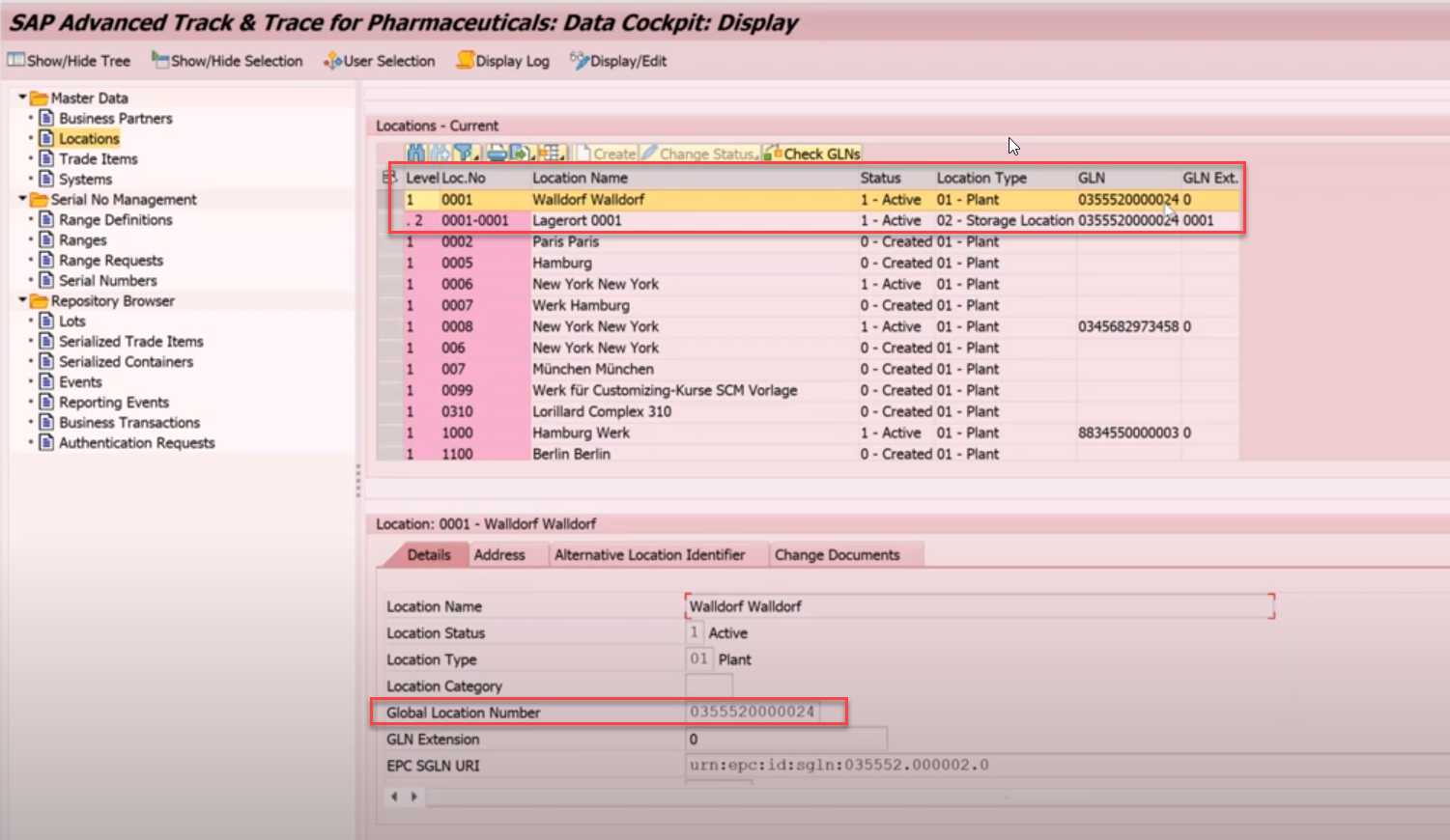
In SAP Advanced Track and Trace for Pharmaceuticals, Trade Item is identified by the Global Trade Item Number (GTIN).
Trade items are typically integrated from SAP ECC materials but they can also be maintained locally in the SAP advanced Track and Trace for Pharmaceuticals system and one can also integrate Trade Items from other non-SAP ERP systems.
One trade item can have multiple product variants. ERP systems like, for example, SAP ECC typically manage trade items as materials and the GTIN is assigned to one of the alternative UoMs of the material
-
-
Global Trade Item Number: GTIN is the primary key of the trade item. This is a 14 digit number which can be used by a company to uniquely identify all of its trade items. A GTIN consists of the Company Prefix, Item Reference and a calculated Check Digit.
-

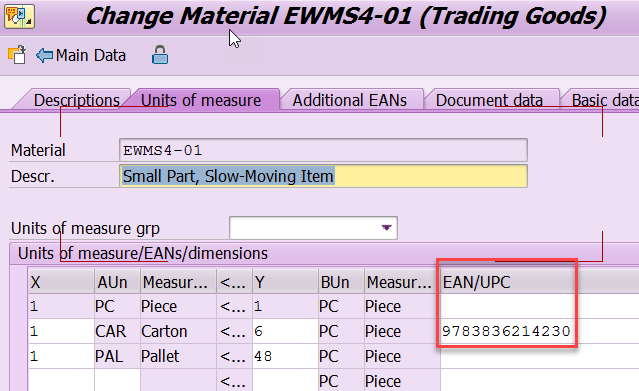
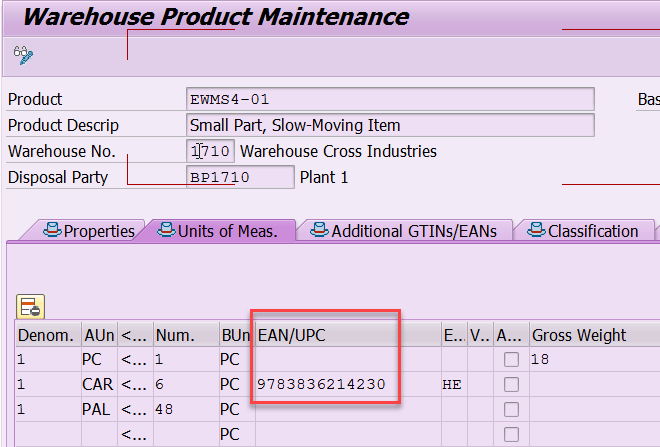
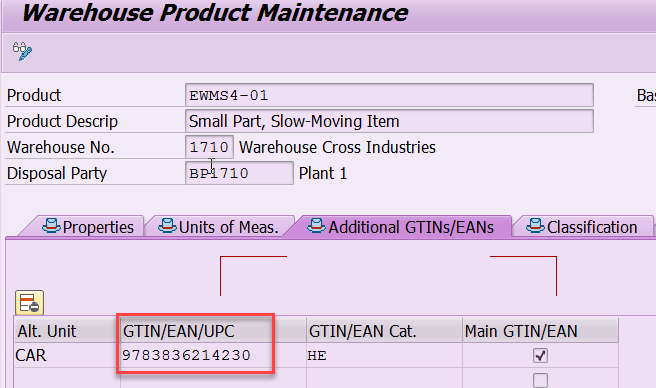
Systems are used for all communication with known external systems. Given below are the important attributes of a System:
-
System Name: Use this field to specify a name to identify the system.
-
System Description: Use this field to give a description to the system.
-
System Type: Use this field to define the system type. System types are predefined by SAP.
-
Business Partner of System: The Business Partner of the system specifies to which Business Partner the system is assigned. This typically means that this system is owned by the respective Business Partner. If a system is configured to receive serial numbers, you have to maintain the Business Partner to enable validation later during commissioning of serial numbers. If the Business Partner is not maintained, then commissioning of Serialized Trade Items fails.
- Serial number request parameter:
-
Allow Serial Number Request for all Trade Items: Selecting this check box indicates that the system can request serial numbers for all trade items. Alternatively, instead of selecting this check box, the allowed trade items can be explicitly added on tab Allowed Trade Items and then the system is only entitled to request serial numbers for all explicitly added trade items.
-
Allow SSCC Range Request: Selecting this check box indicates that the system may request serial numbers for SSCCs.
-
Maximum Serial Numbers per Request: You can define the maximum number of serial numbers that this system will receive per request. If the system requests more than the number specified here, then the returned number is reduced to the maximum number.
- Default Outstanding Numbers: With defining outstanding numbers you can limit the total outstanding serial numbers a system can request. Outstanding numbers are the serial numbers requested by a requesting system for a particular trade item (GTIN) or SSCC (GCP) which are not reported back as commissioned or lost. Default outstanding numbers define the maximum outstanding numbers that will be taken as a default for this system.
-
-
Communication Settings:
-
Communication Type: Use this field to define the kind of communication for data transfer between systems. You can choose either an RFC Call or a Web Service Call. In some cases the communication type is predefined, depending on the type of data exchanged with the system:
-
External systems are typically connected through web service connection
-
Local SAP Advanced Track and Trace for Pharmaceuticals instances always communicate through RFC
-
Systems for Regulatory Reporting are typically maintained with communication type web service. For more information, see Integration of External Systems .
-
-
Default Communication Mode: You can define whether default communication shall happen synchronously or asynchronously. This parameter is only taken into consideration if not defined within the context.
-
External System Name: This is the system name by which your system is known when connected to another system. Whenever you need to communicate with the other system, you use the name of this external system. The system owner of the other system needs to provide this external system name for the two systems to communicate.
-
Serial Number Request Type: The solution supports three types of serial number requests. For further details see Serial Number Exchange.
-
ATTP 1.0 – Synchronous
-
ATTP 2.0 – Synchronous
-
ATTP 2.0 - Asynchronous
-
- Communication Adapter: Assigning communication adapter to the system will enable all outbound SOAP communication to be processed via an adapter processing logic instead of ATTP logic. You need to implement adapter processing logic in BAdI if you want to use it. You can specify new communication adapter using transaction /STTP/COM_PRFL and logical port for adapter using transaction /STTP/COM_PRFLA.
-
RFC Settings: Specify the setting only if you have selected the communication type as RFC Call.
-
Logical System: Specify a logical system ID of the connected system.
-
-
Web Service Settings: Specify these settings only if you have selected the communication type as a Web Service Call.
-
Logical Port: Specify the logical port of the connected system.
-
-
-
-
Allowed Trade Items: In this tab, you maintain all trade items for which the system can request serial numbers. Note that this maintenance is only required if you have not selected the check box Allow Serial Number Request for all Trade Items In addition, for each trade item you can define the maximum outstanding numbers that this system can have for a particular trade item. If not defined here the default outstanding numbers defined on the tab Details will be taken for this trade item.
-
Assigned Ranges: This tab displays the ranges which are currently assigned to the system. The assignment is done in range management. From this tab, you can navigate to the Range screen to review the assigned Ranges.
- Authorized GLNs: This tab is currently only relevant for the feature Requesting EPCIS Messages. Here you can maintain the GLN groups for which this particular system is authorized to request EPCIS messages in addition to the standard GLN authorizations derived via the business partner assigned to the system. For more information, see Requesting EPCIS messages and the developer guide SAP Advanced Track and Trace for Pharmaceuticals: Requesting EPCIS Messages on the SAP Help Portal at http://help.sap.com/attp .
-
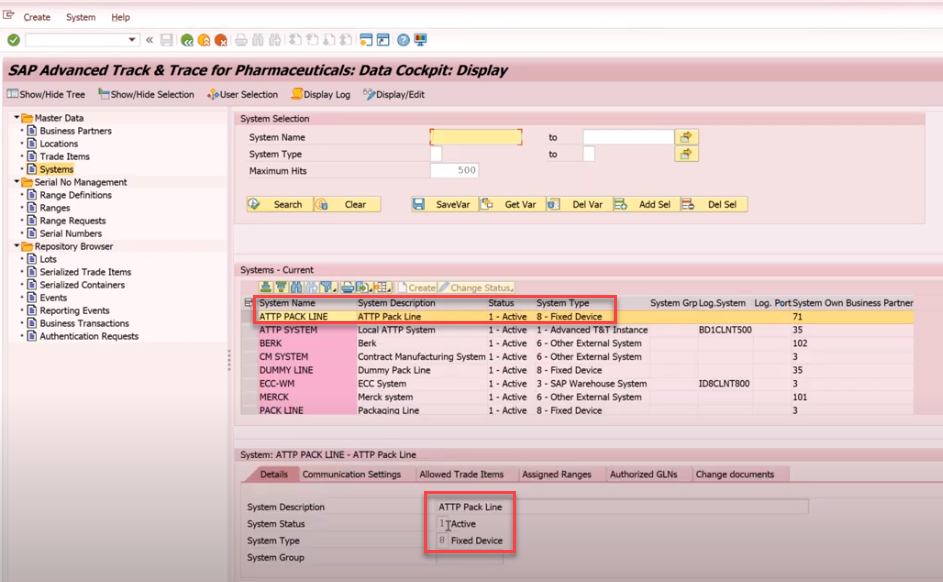
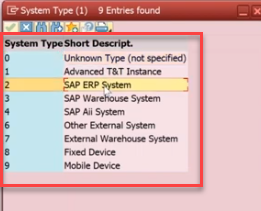
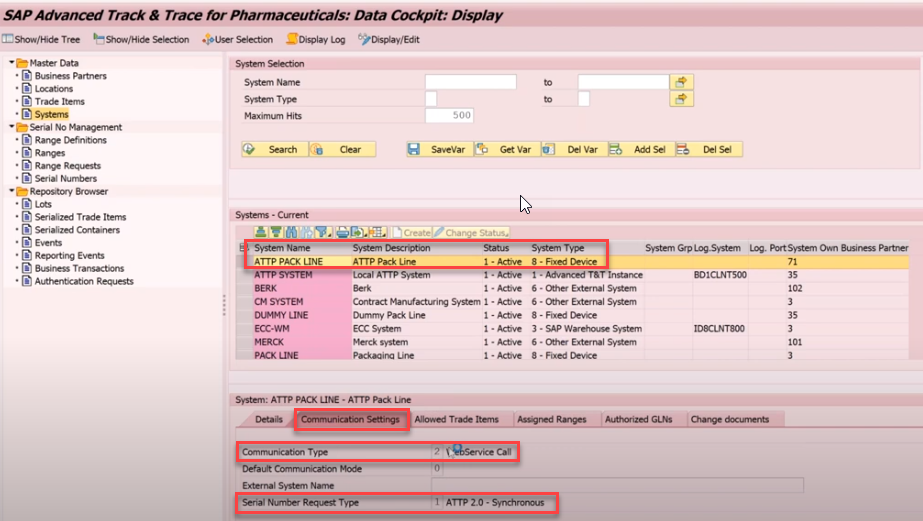
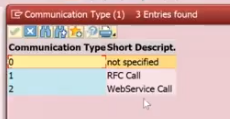
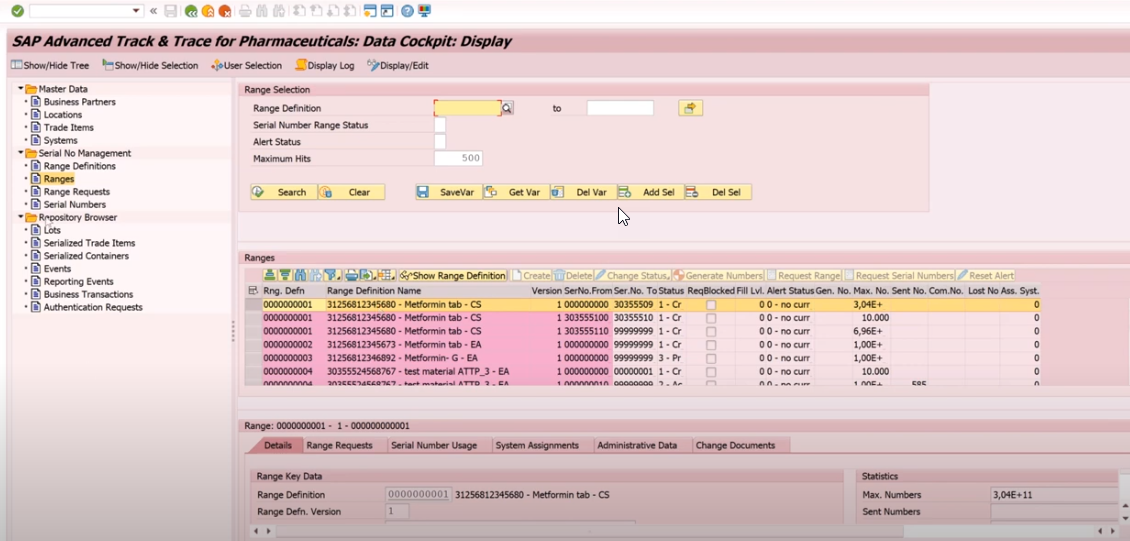
Lot is also known as a Batch or LGTIN and is a non-serialized quantitative object with a quantity that is typically more than 1. A physical lot may be present at the same time in many different places with partial quantities and therefore cannot be uniquely identified.
A lot is identified by its GTIN and its lot number and you can convert it into different representations like GS1 element string (example –(01)03953720000003(10)BT290504) or EPC URI format (example – urn:epc:class:lgtin:395372.0000000.BT290504).
Features
In comparison to the other object types the lot has the following specific attributes:
-
GTIN
-
Lot Number
-
Expiry Date: This field denotes the date when a serialized trade item or batch expires.
-
Manufacturing Date: This field denotes the date when a batch, and therefore all serialized trade items belonging to that batch, has been produced.
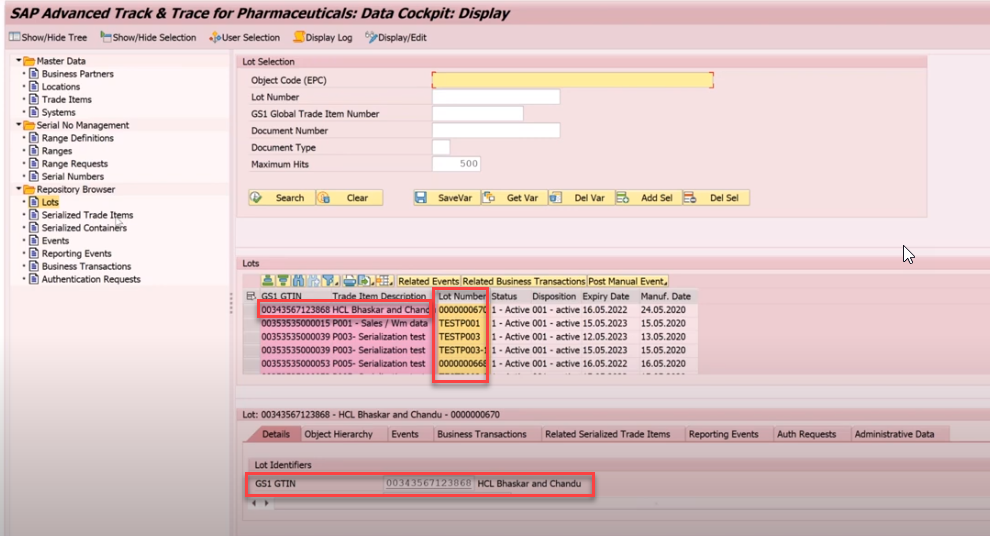
A Serialized Trade Item (SGTIN) typically represents a saleable and uniquely identifiable pharmaceutical product.
Serialized Trade Items are identified by GTIN and the serial number. It can be converted into different representations like GS1 element string (for example, (01)07501200000027(21)81502241000000000004) or EPC URI format (example, urn:epc:id:sgtin:750120.0000002.81502241000000000004).
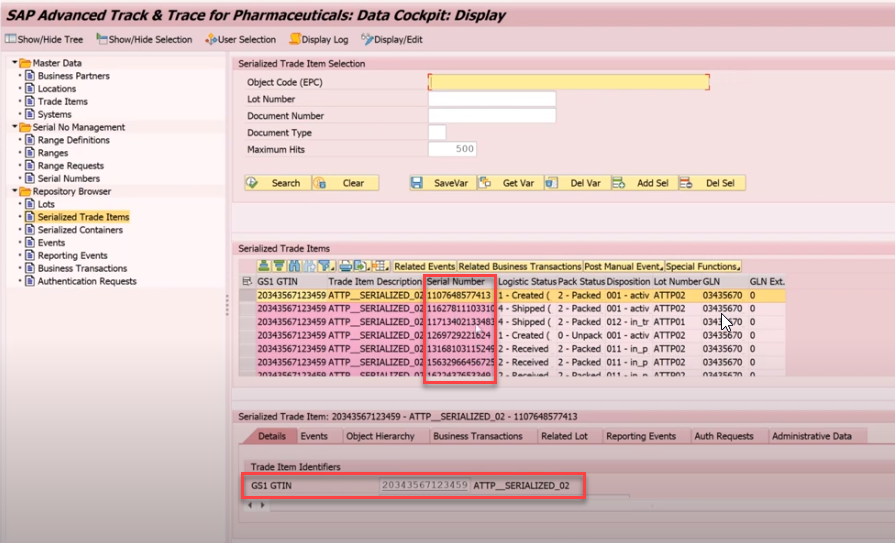
A serialized shipping container code (SSCC) is a uniquely identifiable transport unit like a pallet or a carton. Serialized containers typically carry a hierarchy of lover level SSCCs and hierarchies of SGTINs. The top level SSCC of a packaging hierarchy is the object which is tracked and traced in the supply chain and all events captured with respect to the top level object are inferred to the child objects.
